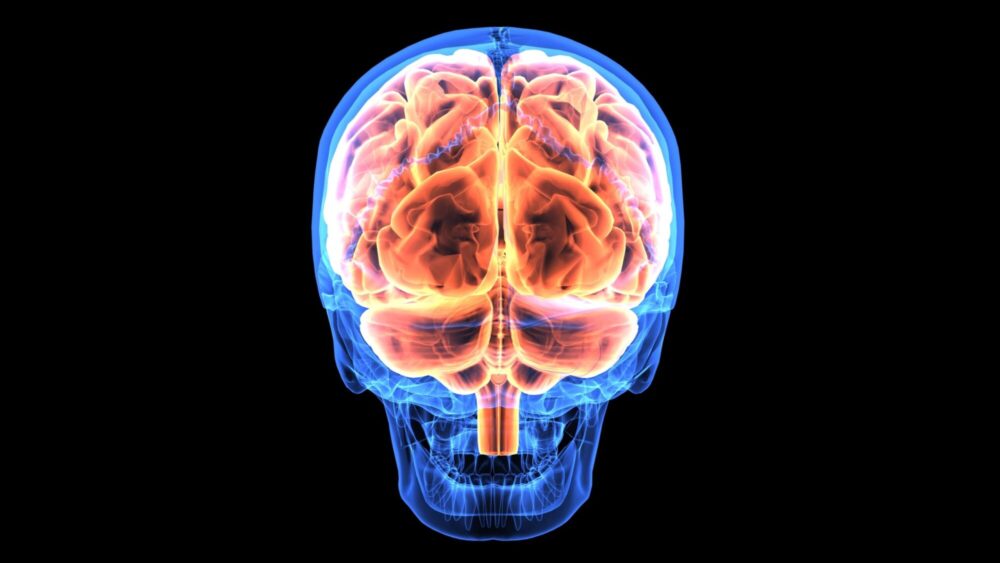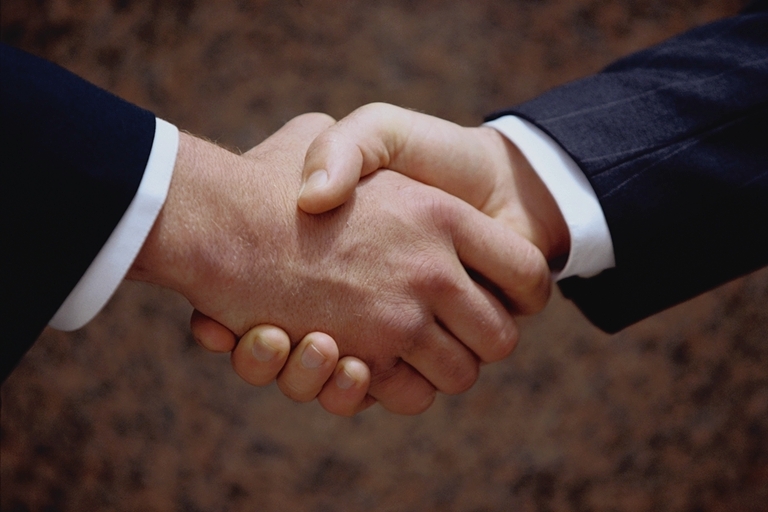Stand Up Straight!
On The Visual Aspect Of Executive Presence: Bearing
Your Bearing…is the first thing people see that influences how others perceive you.
Interestingly enough, it also influences how you perceive yourself.
In this article we’ll examine how to do things consciously that you may have done instinctively or accidentally in the past.
That way, you will be able to replicate the actions, use them deliberately in the future, and increase the likelihood you will be recognized and listened to as a vibrant, dynamic, believable leader.
Three Key Elements Of Bearing
When a strong leader walks in a room, we often get an immediate sense their prestige, confidence, and knowledge.
They’re lit up. They exude power and success. They have an aura of confidence and competence. They have “charisma.”
We don’t know if they have a passionate vision or a brain in their head, can speak in full sentences or have enemies beyond number. But all eyes turn toward them – something about them draws us to listen to them, often before they even open their mouths.
So, how do they do that? And, how do we?
There are obviously many intertwined actions, skills, and talents that apply. The first thing you may notice is their bearing. Three specific components of bearing, listed below, will be expanded in greater depth in the following pages.
✓ Posture
✓ Eye Contact
✓ Nodding
The most important thing to realize is this: A strong leadership bearing can make, break, or carry you whether your clothes, your speech, even your ideas, are perfect or not…in fact, whether you ever even get a chance to speak. And, the elements of good leadership bearing are easy – and kind of fun – to see, learn, and practice.
The Mind-Body Feedback Loop
Before I examine those three key components of bearing, I will take a brief walk over to the science side to look at some amazing aspects of the brain/body connection.
In brief: Brain science dictates that when you change your bearing and the elements that are part of it, you will change how others see you; more importantly, you will change the way you think and feel about yourself.
The Loop Goes Both Ways – But Sometimes Leaves “Us” Out!
We all know that we get sensory input from our bodies about our environment through our senses.
We know that our brains process the information, and then send information out to cause the body to move to action/reaction. We know are in a constant state of revolving feedback between the mind and the brain.
Here’s the key thing to remember: The feedback loop goes both ways, in both directions, to a far greater extent than we normally believe, often with little or no involvement of the rational/logical parts of our brains.
Now, the brain is, of course, our decision-maker.
However, many, many of the decisions are made in the so-called “primitive” parts of the brain, and our higher, intellectual processing brain – the part that we think of as our “self” – may be only incidentally involved.
Sometimes it is our body’s actions/reactions that tell our higher mind what to feel emotionally, well before we make any logical or intellectual or higher-cortex calculations at all.
Two things are happening all the time:
✓ Thought/emotion cause physical action: First, what we consciously think causes our body to react and to configure our facial expressions and our stance in certain ways. This is what we notice most of the time.
✓ Physical action causes thought/emotion: Second, how we hold our body and our facial expressions can actually create our emotional responses and feelings about a given situation. This is what we rarely notice, but can control if we do!
Ancient Quick-Response Defense System!
Change your body movements; change your feelings.
Have you ever had someone throw something to (or at!) you, and found that you had caught it, deflected it, or had your arm move up before you actually realized what was happening consciously?
This is all part of what I call our “ancient quick-response defense system.”
If our ancestors had relied on thinking about their reactions to immediate threat, they’d never have survived to be our forebears. Our “defense system” for immediate physical danger allows us to do things like blink, shift our stance, or duck automatically, without conscious thought.
What was true then is true now – we still can’t “think” intellectually as fast as our primitive brains can react.
And, we don’t have to. Our miraculous brain/body connection is set up to allow the ancient portions of our brains – the ones that control our body movements, automatic and intentional – to react before our intellectual processor kicks in.
We blink before we realize consciously that an unexpected finger is headed toward our eye, we start to run or dodge before we specifically identify that large fast-moving object as a saber tooth tiger, falling boulder, or NYC taxicab.
A split second later, those movements give information to the rest of the brain, and we realize “Oh – finger/tiger/rock/cab!” but only after we’ve already dodged, blinked, or started to run. Our newer cerebral cortex – the intellectual thinking part of the brain – then survives to have the time to reflect and consider our actions, and busies itself figuring out cause and effect to try to keep us out of trouble in the future.
So, the bottom line is this: The body jumps first, then the intellectual mind considers.
We Trust Our Bodies
We trust our bodies’– our “gut” – reactions because they have served as successful guides for our ancestors over countless eons of tigers, fingers and falling rocks, not to mention centuries of moving vehicles. The physical movements of our body influence – and, in many cases, drive – whether we feel safe, in danger, nervous, powerful, balanced, defensive, etc.
Here’s the remarkable part: The feedback from the body will occur whether the body position or movement was taken accidentally, in response to an outside situation, or deliberately.
You can trick your brain by moving your body.
You can change how you feel by consciously changing your stance, because the feedback from your body is faster and stronger than your intellectual brain, and your intellectual brain trusts the cues from your body. It reacts to them first, before “thinking.”
✓ If your body is in a defensive, weak, nervous posture, you will feel defensive, weak and nervous, even if you weren’t before. Your body is warning you of danger.
✓ If your body is in an open, strong, confident posture, you will feel open, strong and confident, even if you weren’t before. Your body is telling you that you are safe.
It is possible that neither the “danger” nor the “safety” is inherently true. However, the ancient quick-response defense system is designed largely for immediate danger, and unless it’s tiger/boulder/cab (finger), you’re better off subverting it – tricking your brain by moving your body differently.
You can think more clearly about options if and are not distracted by the feedback from your body telling you to run or hide!
If you stand like a leader, you will be more likely to feel, act, and think like a leader.
(An aside: For a couple of really fascinating lessons, Google “mirror neurons” – now being called the “empathy neurons,” — one more way our mind and body protect us without any conscious thought on our part. Also, check out information on panic attacks that show them occurring mostly because of a faulty feedback mechanism between body and conscious mind. (Notably, “What You Can Change and What You Can’t” by Martin Seligman, the father of Positive Psychology.)
Your New Bearing
The Three Key Elements of Bearing
So, now we come back to key elements of bearing:
✓ Posture
✓ Eye Contact
✓ Nodding
Key Element #1: Posture
“Fake it ‘til you make it” is absolutely legitimate when it comes to the brain-body connection. Use your body to teach your brain.
(Note: My first comments are about standing posture. The same mindset refers to sitting postures – a few notes on that later on.)
In your standing posture, you should come to be aware of three things:
✓ Stance
✓ Attitude
✓ Gestures
Stance: The Mountain Pose
A powerful leadership posture or stance is upright, open, relaxed, and balanced:
✓ Hips square, forward-facing and even, neither higher than the other
✓ Feet comfortably placed roughly hip-width apart
✓ Hands relaxed, at your side
✓ Head centered and upright, with chin parallel to the floor
✓ Eyes forward, face relaxed
(Yoga folks will recognize “tadassana,” or “the mountain” pose/asana. If the image works for you, think of yourself as a peaceful warrior poised on top of a mountain – still, centered, balanced, grounded – who can nevertheless move in any direction from the current position.)
For some of you, standing in this position may at first make you feel odd – funny, exposed, and with your hands left with nothing to do. This is normal. Many people feel uncomfortable when asked to change things they have done unconsciously for years, or sometimes their entire (standing) lives. To them, I say:
✓ Just because you learned to stand one way as a child – girlishly, boyishly – doesn’t mean you can’t change, and learn to stand differently as an adult.
✓ Anything worth doing is worth doing badly to begin with. **
Trust me – it LOOKS, and feels great, and you will come to get used to it.
(Note: Seated Posture – The rules are pretty much the same. Be easy! Sit up straight – upright, calm, arms relaxed. If you sit all the way back in your chair, sit upright, not slouching. Likewise, stay back from the forward edge of the chair as it makes you look anxious, unless you are so short that your feet will otherwise dangle.
If you’re seated at a table, keep your hands above the table, or, if the chair has arms, rest them on the chair arms. Don’t lean forward and clench your hands in your lap or between your knees (this makes you lower and shorter!), likewise don’t lean back and fold your hands over your stomach – or worse, behind your head!
If you are seated in an easy chair, sit comfortably, but in a way that still looks “ready to listen” and upright.)
Attitude: I am ready
Once the stance is taken, the attitude it drives – and the one to be focused on – is:
Calm stability
✓ I am in control, I am ready
✓ I have purpose; intention
✓ I have something important to tell you that I care about!
✓ I can move in any direction equally-easily
✓ I am unafraid
✓ I light up the room!!!
A STORY
My friend Helen, a cabaret singer, commands the stage. She walks on, picks up or stands in front of the microphone and tells herself – “I am the brightest light in this room.” She looks around the room and thinks: “What I will do next is gonna make you forget to order another bourbon!” She is, she does, and they do!
Gestures: Open and appropriate
When you speak or gesture from a balanced position, you will find awkward, defensive gestures become less frequent, and easier to control.
Many so-called “nervous” gestures come from an excess of energy – sometimes from fear, sometimes from excitement – sometimes both!
Calming your stance will calm your gestures. Your gestures will follow and grow out of a centered approach, where all the excess energy flows through you easily.
Open, Non-Defensive Gestures:
✓ Hands are calm and/or appropriate to speech: No flipping, wringing, flailing, shaking, abrupt or childish gestures.
✓ No blocking gestures: “Blocking” gestures are defensive gestures that protect you psychologically by creating a barrier between you and the rest of the world. Usually they put one part of your body between your torso or face, and the rest of the world. Examples: crossed arms, hands in the “Venus” position in front of your lower body, hands gripped together or steepled, hand in front of the mouth, etc.
✓ No “self-reassuring” gestures: When we are nervous, we may reassure ourselves by touching ourselves. We fiddle with, twirl or flip or run our hands through our hair, we touch our face, neck, ears, lips, etc. These tend to calm us – like a mother’s hand! – while showing the world we are…..nervous.
A Tip: If you find yourself very nervous or excited before speaking, you may find it helpful to shake your hands a few times as if you are flicking water off your fingertips. It may help let go of some of that energy so you can return to calm.
Key Element #2: Eye Contact
Note: The rules regarding eye contact are culturally-driven.
In most of common Western/U.S. society:
THE LISTENER is charged with maintaining eye contact, while the speaker may look around.
(Note: If you travel to or mingle with other cultures, know that this may not be the case elsewhere. Watch locals talk with each other – take your cues from them. Some places the rules are reversed or shortened, causing us to think people are being disrespectful or not listening – and causing our listeners to think the same about us!)
In Our Society:
✓ Maintaining eye contact when you are not speaking tells people you are listening.
✓ Breaking eye contact when you are not speaking means you are not listening.
A STORY:
I once met Rudy Giuliani, and have had friends who have met Bill Clinton, Mother Theresa, and other charismatic leaders.
All of us had similar reactions, and made the same kind of general comments:
✓ “His/Her eyes never left my face.”
✓ “His/Her full charm was focused on me.”
✓ “When s/he talked to me, it was like I was the only person in the room/world/Universe.”
Charismatic, interested, focused leaders give the aura:
✓ “Right now, you are the most important person in the world”
✓ “I want to know what you have to say”
✓ “You’d better be able to back what you have to say, because I’m listening really hard!!”
Mostly, this comes out of two things:
First of all, they often really do want to know what you have to say – they tend to be curious, and to realize they can’t always know ahead of time where important information will come from.
Second, they maintain eye contact, and never look away.
Key Element #3: Nodding
The last key element of bearing I have listed as “nodding.”
It isn’t really only about nodding; however, I have used this as a code to draw your attention to HEAD POSITION.
As with other body movements, a leader’s head is generally centered and still, and/or moves deliberately.
I see many people – particularly women, for a lot of reasons that will be the source of another article! – nodding constantly.
Next time you are in the audience of a presentation, notice how many more women than men nod, and how much more often they do it.
Notice that – especially in a group – anyone who is nodding a lot tends to look less serious, and less powerful, rather than more. People who nod slowly, with consideration, or not at all, tend to look more serious, insightful and thoughtful, especially if they maintain their eye contact on the speaker…!
Why do we – men or women – do this?
Nodding is a complex piece of body language. In our culture (nodding is also a cultural artifact), it signals a number of things. Most obviously:
✓ Agreement
✓ Understanding
Additionally, it signals several other things, that women as a broad generalization, tend to care more about than men (though not always!):
✓ I’m listening
✓ Go ahead – Keep talking!
✓ I’m friendly; I’m with you
Obviously, these are not all bad. And, like many things, too much of a good thing can work against you.
In particular, when people get excited, they nod faster – and look like Bobble-heads!
Leaders nod more consciously.
If you’re going to nod, do it purposefully:
✓Stand or sit up straight, maintain eye contact, and keep your head still.
I
✓f you do nod, nod once, and/or nod slowly.
✓ Whenever possible, avoid tipping your head to one side or another, and take your head off the chin parallel to ground position only when speaking to a person taller or shorter than you are.
✓ If you find you’re bobble-heading….stop! Return to calm.
Conclusion
Mom and Dad were right!
To be taken seriously in the world, to appear more charming, charismatic and intelligent:
✓ Stand up straight – don’t slouch!
✓ Stop fidgeting, and keep your hands out of your hair!
✓ Look people in the eye!
✓Slow down, and consider what you are doing!
✓ And don’t forget to breathe…!
Exercises:
Practice #1 – Your Stance: How Does it Feel?
Practice #2: Stop & Block!
Practice #3: The Wrong Gestures
Practice#4: Eye Contact – An Actors’ Trick
A Side Note: Breathing







